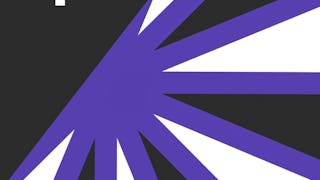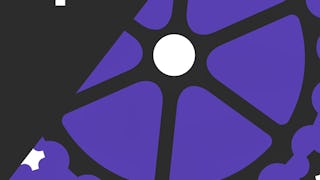In this course, we’ll explore the history of layout on the web and techniques that have been used to create those layouts. You’ll practice using Flexbox CSS and gain an understanding of how Flexbox works to create layouts for web pages. We’ll practice using responsive web design and discuss the challenges of managing layouts across multiple screen sizes. You’ll learn specific techniques to build a responsive web page and practice using mobile first development. Lastly, you’ll apply the techniques learned in this course by using Flexbox properties to create a mini portfolio website and deploy it on GitHub.
通过 Coursera Plus 解锁访问 10,000 多门课程。开始 7 天免费试用。


了解顶级公司的员工如何掌握热门技能

积累特定领域的专业知识
- 向行业专家学习新概念
- 获得对主题或工具的基础理解
- 通过实践项目培养工作相关技能
- 获得可共享的职业证书

该课程共有4个模块
Welcome to the course! In this module, we will start exploring the history of layout on the web. By layout, I mean specifically how the visual space of the webpage can be used, and how different elements can be arranged within that space. We will discuss the history of techniques that have been used to create layouts on the web, and dive into the complexities and challenges associated with creating layouts on the web. Let's get started!
涵盖的内容
13个视频5篇阅读材料1个作业4个讨论话题
Welcome to the second lesson in our course on basic web layout. In this lesson you will learn about and practice a limited set of initial features that accompany the flexbox CSS layout module. You will create simple layouts using these features and get a hint of what is to come, as we get deeper into understanding how flexbox works to help us create layouts for our web pages.
涵盖的内容
15个视频2篇阅读材料1个作业3个讨论话题
Welcome to the third lesson in our course on basic web layout. In this lesson you will learn about responsive web design, including how the term was coined and the history associated with the challenges of managing layouts across many possible screen sizes. You will learn specific techniques that you can use to build a responsive web page. We will discuss mobile first development and why it is important to make your designs work on the smallest, least capable devices first, then progressively enhance those designs for users with larger screens and more resources.
涵盖的内容
17个视频4篇阅读材料1个作业3个讨论话题
Welcome to the fourth lesson in our course on basic web layout. In this lesson you will learn about more of the flexbox properties that will help you create a variety of web layouts. This set of properties compliments the techniques learned in the previous lesson about responsive design, as they will help you further control the design of your website across a wide variety of screen sizes. At the end of this module, you will have the opportunity to use everything you have learned to create a simple, mini portfolio website and deploy it to GitHub to share with your friends, family and colleagues.
涵盖的内容
18个视频4篇阅读材料1个作业5个讨论话题
获得职业证书
将此证书添加到您的 LinkedIn 个人资料、简历或履历中。在社交媒体和绩效考核中分享。
位教师

从 Mobile and Web Development 浏览更多内容
 状态:免费试用
状态:免费试用University of California, Davis
 状态:免费试用
状态:免费试用 状态:免费试用
状态:免费试用
人们为什么选择 Coursera 来帮助自己实现职业发展




常见问题
To access the course materials, assignments and to earn a Certificate, you will need to purchase the Certificate experience when you enroll in a course. You can try a Free Trial instead, or apply for Financial Aid. The course may offer 'Full Course, No Certificate' instead. This option lets you see all course materials, submit required assessments, and get a final grade. This also means that you will not be able to purchase a Certificate experience.
When you enroll in the course, you get access to all of the courses in the Specialization, and you earn a certificate when you complete the work. Your electronic Certificate will be added to your Accomplishments page - from there, you can print your Certificate or add it to your LinkedIn profile.
Yes. In select learning programs, you can apply for financial aid or a scholarship if you can’t afford the enrollment fee. If fin aid or scholarship is available for your learning program selection, you’ll find a link to apply on the description page.
更多问题
提供助学金,





